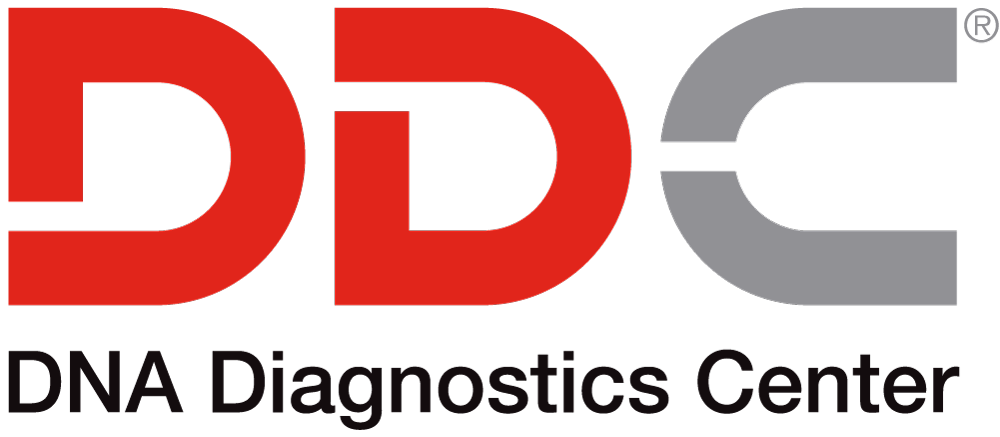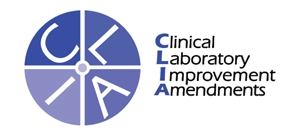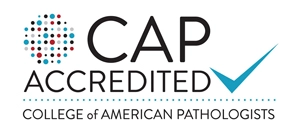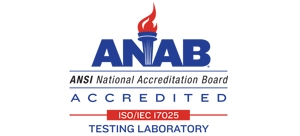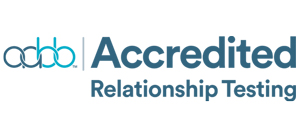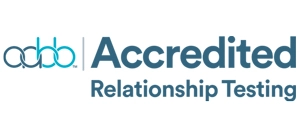A DNA test can change your life.
DNA Diagnostics Centre (DDC) provides DNA tests for many different purposes with professional, fast, and reliable services. Each test is supported by our fully accredited, state-of-the-art laboratories, backed by customer service, and overseen by expert geneticists and consultants to ensure accurate and dependable results.
With our experience in a wide range of DNA testing—including Paternity, Maternity, Sibling, and Ancestry tests—we also offer DNA storage and legal defense services along with expert advice and consultation.
Affordable prices
Painless sample
collection
Local sample collection centers
Confidentiality
Order a Test
View DNA Tests

The principle behind paternity tests or DNA testing is to compare the DNA profiles of the child and the “alleged father” (and ideally the mother). Every child inherits half of their DNA from their biological parents. The test determines whether the alleged father’s DNA is present in the child’s DNA. If a biological connection exists, genetic markers will clearly indicate this.
With a paternity test or home DNA test, you can collect samples yourself at home and send them to us. Our test kits include full instructions and return envelopes. The standard sample is a cheek swab using a soft cotton swab. This test is for personal knowledge and cannot be used as legal evidence in court.
Highlights:
- Confirm paternity from home or at a local clinic in Australia
- Results in 7–10 business days after sample collection

Legal paternity tests are mostly requested for family law cases, but also commonly for immigration purposes.
These tests follow a strict chain of custody to ensure their legal admissibility:
- Samples are collected only by independent professionals (e.g., doctors, nurses, or DDC representatives).
- Appointment times and locations are prearranged.
- Samples are sealed with security labels and securely transported to the lab.
- Labels are inspected upon arrival to ensure tamper-proof status.
Highlights:
- Legally confirm paternity with a strict chain of custody
- Results in 7–10 business days

DDC offers safe and definitive paternity testing before birth using advanced technology and scientific expertise, ensuring no harm to the mother or fetus.
Only DDC offers this quick and risk-free method using DNA SNP Microarray technology. It analyzes fetal DNA found naturally in the mother’s bloodstream.
Blood samples from both the mother and alleged father are sufficient.
Highlights:
- Confirm paternity from the ninth week of pregnancy
- Results in 8–10 business days

This test determines whether a child is biologically related to the alleged grandparents. It’s usually used when the alleged father isn’t available for testing.
Highlights:
- Confirm biological relation between grandparents and grandchild
- Results in 12–15 business days

Used to determine whether two individuals are siblings. Results may indicate either full-sibling or half-sibling relationships.
- Half-sibling test: Used when the alleged siblings have different mothers and suspect they share the same biological father
- Full-sibling test: Used when they share the same mother and suspect the same biological father
Highlights:
- Confirm biological sibling relationships
- Results in 12–15 business days

This is used when a sample from the alleged father is not available, and instead, his biological siblings (aunt/uncle) are tested against the child.
Highlights:
- Confirm biological relation between an aunt/uncle and niece/nephew
- Results in 12–15 business days
OTHER RELATIONSHIP TESTS
Maternity DNA Test
Used to confirm biological motherhood. Common reasons include:
- A reunited child given up for adoption
- Confirmation of correct embryo placement during IVF
- Suspicion of a hospital mix-up
Same method as the paternity test: comparing DNA profiles.
Highlights:
- Confirm mother-child biological relationship
- Results in 7–10 business days
Twin Zygosity DNA Test
Used to determine whether twins are identical or fraternal. Some take this test out of curiosity; others consider it important for future medical reasons (e.g., organ donation compatibility).
- Identical twins originate from a single fertilized egg (zygote) that splits and share the same DNA
- Fraternal twins come from two separate fertilized eggs and have different DNA profiles
Highlights:
- Determine if twins are identical or fraternal
- Results in 7–10 business days
DNA Reconstruction
Used when the alleged father is unavailable and other relatives (like grandparents) also cannot be tested. It involves multiple advanced genetic comparisons with known relatives.
Highlights:
- Confirm complex family relationships
- Results in 7–10 business days
Ancestry & Lineage
Ancestry Test
Discover fascinating details about yourself and your past:
- Ideal for amateur historians or anyone curious about their ancestry
- Confirm findings from personal genealogy research
- Share your family history with loved ones
How it works:
Your DNA reveals where your ancestors came from. Our test analyzes 176 regions in your genome to build a biogeographical map and determine which of the four founding populations you’re most closely related to:
- European (includes Middle Eastern and South Asian)
- East Asian (Japanese, Chinese, Korean, Pacific Islands)
- African (Sub-Saharan populations)
- Native American (from North, Central, and South America)
Highlights:
- Discover your genetic origins and family history
- Results in 25–30 business days
Y-Chromosome Comparison
This test compares the Y-chromosomes of two or more males to confirm if they share a paternal lineage. It’s used when the alleged father isn’t available and other tests can’t be performed.
- Y-chromosomes are passed from father to son with little change
- Males with a shared paternal line will have nearly identical Y-STR profiles
- Only confirms paternal lineage, not specific relationships (e.g., father/son vs. uncle/nephew)
Highlights:
- Confirm paternal lineage
- Results in 7–10 business days
mtDNA Comparison
This test compares mitochondrial DNA to confirm maternal lineage.
- mtDNA is passed from mother to child
- Only daughters pass it on to their children
- Used to confirm maternal family connections
Highlights:
- Confirm maternal lineage
- Results in 20–25 business days

Peekaboo™ At-Home Early Gender Test
Find out your baby’s gender as early as six weeks into pregnancy. Results are ready the same day your sample arrives at the lab.

Why Choose DDC?
With reliable and professional service plus competitive pricing, DDC is a leading DNA test provider in the United States, United Kingdom, and many other countries. We process all DNA tests twice independently to maintain our 100% error-free record.
DDC Laboratories are accredited under Section 20 of the Family Law Reform Act 1969 by the Ministry of Justice for paternity testing in England and Wales. They are also ISO/IEC 17025 certified by ACLASS and accredited by ASCLD/LAB and AABB.


Frequently Asked Questions (FAQ)
What is the reliability rate of the paternity test?
- Paternity tests conducted by DDC provide results with 99.9% accuracy.
- Scientifically, DNA tests determine the existence of a biological relationship with results indicating over 99% probability.
- Scientifically, DNA tests determine the absence of a biological relationship with 100% certainty.
When can the tests be done?
- DNA testing can be performed before the child is born.
- It can be done immediately after birth.
- DNA testing can be done at any age.
Am I required to provide a blood sample?
No. DNA is collected using saliva, specifically cheek cells, which can be easily gathered using cotton swabs.
Who can apply for a paternity test?
- Anyone who complies with the guidelines below can undergo DNA testing, with individual privacy being a priority.
- Consent of the individuals is sufficient for DNA testing.
- If the person requesting the test is under 18 years old, a responsible parent or guardian’s permission is required.
How will I receive the test results?
DNA test results are available within 7–10 business days after the samples are collected. The results are delivered in a report that clearly states whether a biological relationship exists or not.
How can I be sure I’ve collected the samples correctly?
There’s no need to worry about making mistakes. As long as you rub the cotton swabs firmly on the inside of the cheek, you will collect a sufficient sample. Just ensure you collect samples from the correct individuals.
Is it necessary to collect a sample from the mother for a paternity test?
No. If it’s not possible, the mother’s sample is not required and does not affect the results. However, if the mother can participate, it allows for a faster analysis and easier retrieval of important genetic information.
Why are additional reports sometimes required?
In certain cases, copies of additional reports may be requested for family members.
If one of the individuals to be tested is in another country, can samples still be collected?
Yes. Arrangements will be made by sending kits with the same reference number to individuals in different countries.
What is special about the cotton swab?
It is a tool used to collect DNA by rubbing it on the inside of the cheek. Unlike regular swabs, it is much more durable and can preserve DNA for a long time.
Is the sample collection process painful?
No. Rubbing the swab on the inside of the cheek is a very simple and painless procedure.
Do samples other than blood affect the results?
Absolutely not. DNA found in cheek cells is identical to the DNA found in blood. Therefore, it does not affect the results.
Can I use any cotton swab from a pharmacy?
No. Ordinary swabs are made only of cotton. However, DDC swabs are specially made of Dacron material.
How long can saliva containing DNA stay on the swabs?
Swabs placed in the envelopes provided with the test can preserve DNA for a long time. There is no strict expiration date. Once the saliva samples are placed in the envelopes and dried, they can retain DNA for an extended period.
What are the basic statistics of a paternity test?
- Each “alleged father” has a 50% chance of being the biological father before testing.
- The Paternity Index (PI) is calculated by dividing the ratio of the alleged father’s DNA to the child’s by the ratio of any random man’s DNA to the child’s.
- All PIs are then multiplied together to get the Combined Paternity Index (CPI).
- The Probability of Paternity (POP) is calculated using the formula:
- 1 / (1 + 1/CPI) and then multiplied by 100 to express as a percentage.
- If the alleged father’s DNA does not match the child’s, the result will be 0.
What is the Paternity Index (PI) and how is it determined?
- The PI is a measure of how well the alleged father’s alleles match the tested child’s alleles.
- The frequency of DNA segments (alleles) in humans and their racial characteristics affect the differences between alleles.
- Because allele sizes vary by race, knowing the race of the alleged father is important for statistical analysis.
- Databases include Caucasian, Black, Hispanic, and Asian populations. If the race is unknown, the lowest valid PI is used.
How is DNA testing done for someone of mixed race?
- There is no specific database for mixed races, so evaluations are based on the details of the mixed heritage (e.g., White and Black).
- The lowest PI is taken to calculate CPI or POP.
What is a gene mutation and how does it affect a paternity test?
- Genes are made of four nucleic acids: adenine, cytosine, guanine, and thymine.
- A mutation changes one or more of these nucleic acids, causing them not to appear in the genetic sequence.
- Mutations can occur in individuals undergoing DNA testing.
- If this happens, matches between the mother/child or father/child may not be observed.
- While normally two individuals are sufficient for testing, mutated cells may require further analysis.
- Mutation frequencies are then taken into account when calculating POP and PI.
What if the person to be tested is ill, missing, or deceased?
- Several options are available. If the person is deceased and samples were taken during autopsy, they can be used.
- DNA can also be extracted from items like tissues used before death.
- In some countries, like the UK, hospitals store such samples for extended periods.
- If no samples are available, DNA from close family members (parents, siblings, children) may be used for analysis.
Can DNA tests be used to protect assets?
- Yes. Especially among high-net-worth individuals, DNA tests are often used to prove biological relationships.
- These may include reconstructed DNA testing, grandparent testing, or sibling testing.
What is a genetic reconstruction test and who needs it?
- If the person to be tested is ill or deceased, samples from other family members are used for genetic reconstruction.
- These samples may come from parents, siblings, or children, and more than one family member may be needed.
- The cost of the test depends on the number of samples required.
How is DNA testing used in adoption cases?
- Adoptive families often perform DNA testing during the process to ensure clarity and avoid future issues.
- This confirms the paternity of the adopted child from the beginning.
Why is it important to know the father for health information?
If the father’s identity is unknown, half of the child’s medical history is also unknown.
Knowing the father is important for detecting potential serious genetic issues.
How is a maternity test done?
- The same process as paternity testing is followed.
- The child’s DNA is compared with that of the alleged mother.
- According to recent information, these tests are often done in cases of babies being switched at birth.
- The test will determine whether the “alleged mother” is the biological mother.
